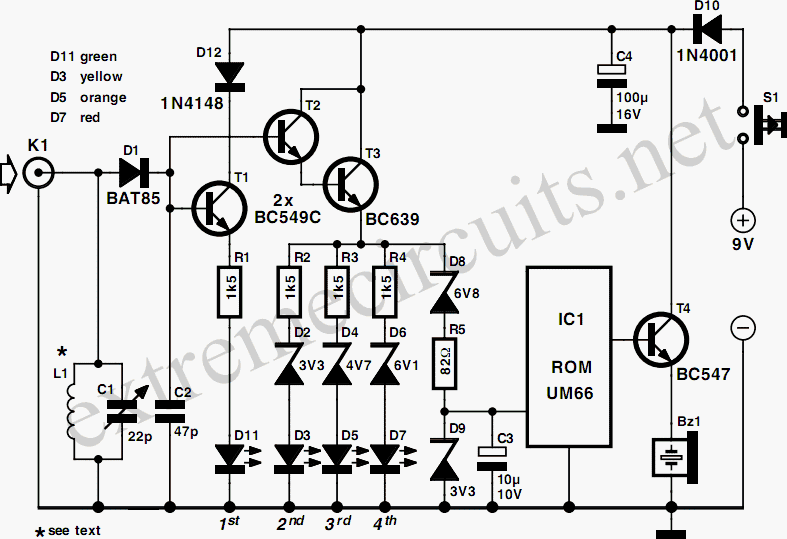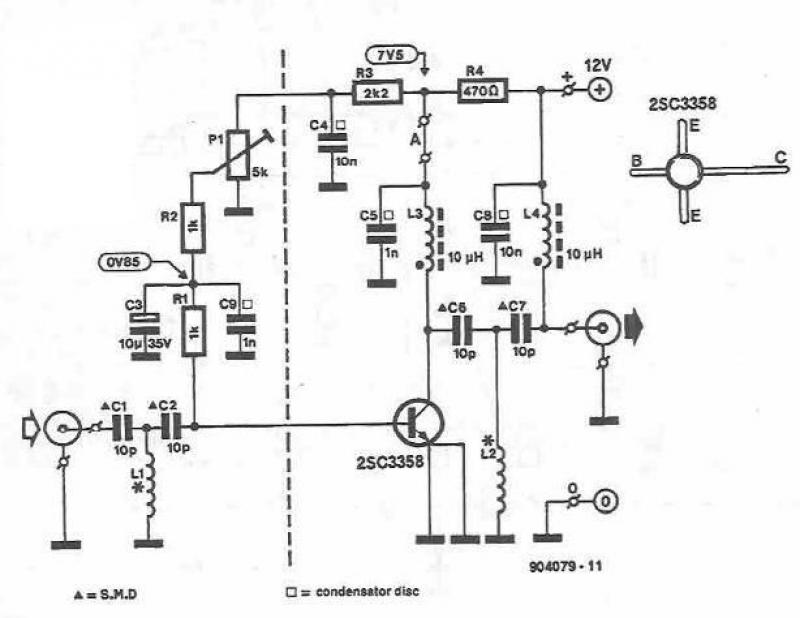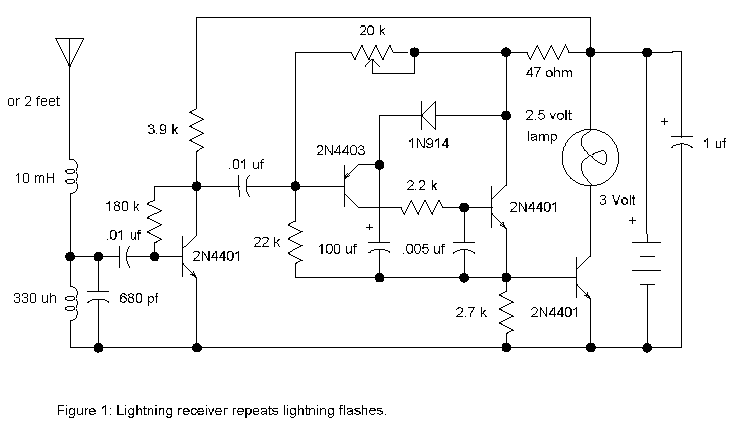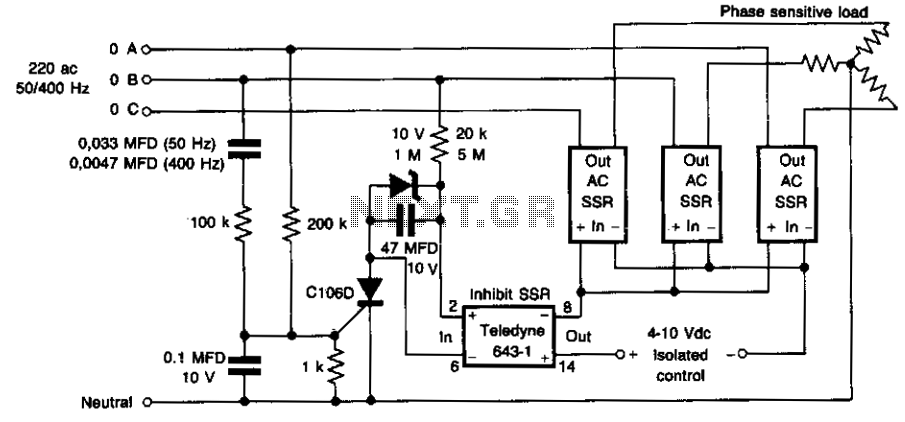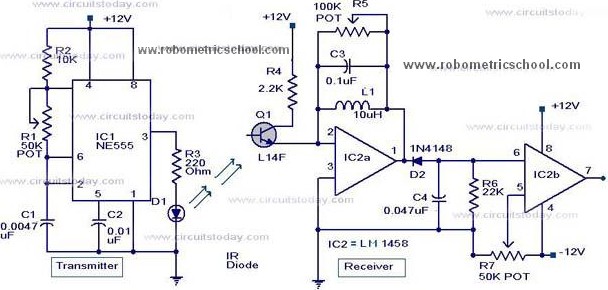
UHF Doppler Motion Detector
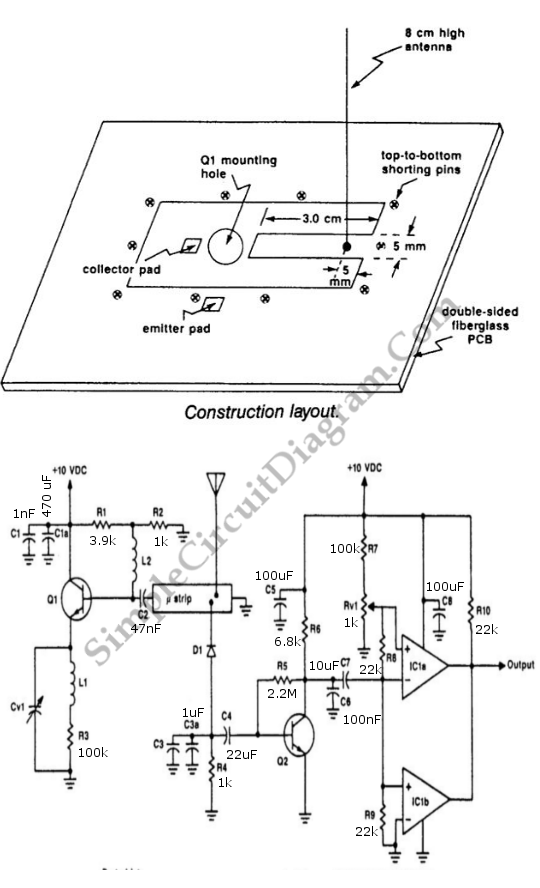
The UHF motion detector operates on the Doppler radar principle. An oscillating signal is generated by the oscillator (Q1), and a portion of this energy is reflected back.
The UHF motion detector employs the Doppler radar principle to detect motion through the analysis of frequency shifts in reflected signals. The oscillator (Q1) generates a continuous wave signal at UHF frequencies, typically within the 300 MHz to 3 GHz range. This signal propagates through the environment, and when it encounters a moving object, the frequency of the reflected signal is altered due to the Doppler effect.
The circuit configuration includes essential components such as amplifiers, mixers, and filters to process the reflected signals. The received signal is mixed with the original transmitted signal to produce an intermediate frequency (IF) signal, which is easier to analyze. This IF signal is then amplified and filtered to remove noise and enhance the detection of motion.
The output from the detector can be used to trigger alarms, activate lighting systems, or interface with other security systems. The sensitivity of the motion detector can be adjusted by modifying the gain settings of the amplifiers and the threshold levels in the processing circuitry. Additionally, the design may incorporate a microcontroller or digital signal processor (DSP) to enhance functionality, allowing for programmable detection parameters and integration with smart home systems.
Overall, the UHF motion detector represents a sophisticated application of radar technology, providing reliable motion detection capabilities in various environments.The UHF motion detector below operates on the Doppler radar principle. A radial signal is created by the oscillator (Q1). Some of this energy is reflected back.. 🔗 External reference
The UHF motion detector employs the Doppler radar principle to detect motion through the analysis of frequency shifts in reflected signals. The oscillator (Q1) generates a continuous wave signal at UHF frequencies, typically within the 300 MHz to 3 GHz range. This signal propagates through the environment, and when it encounters a moving object, the frequency of the reflected signal is altered due to the Doppler effect.
The circuit configuration includes essential components such as amplifiers, mixers, and filters to process the reflected signals. The received signal is mixed with the original transmitted signal to produce an intermediate frequency (IF) signal, which is easier to analyze. This IF signal is then amplified and filtered to remove noise and enhance the detection of motion.
The output from the detector can be used to trigger alarms, activate lighting systems, or interface with other security systems. The sensitivity of the motion detector can be adjusted by modifying the gain settings of the amplifiers and the threshold levels in the processing circuitry. Additionally, the design may incorporate a microcontroller or digital signal processor (DSP) to enhance functionality, allowing for programmable detection parameters and integration with smart home systems.
Overall, the UHF motion detector represents a sophisticated application of radar technology, providing reliable motion detection capabilities in various environments.The UHF motion detector below operates on the Doppler radar principle. A radial signal is created by the oscillator (Q1). Some of this energy is reflected back.. 🔗 External reference
